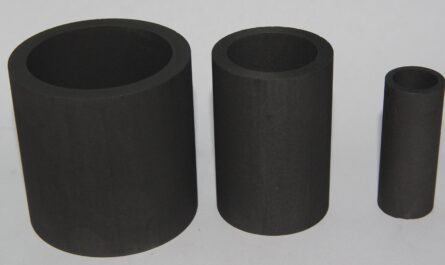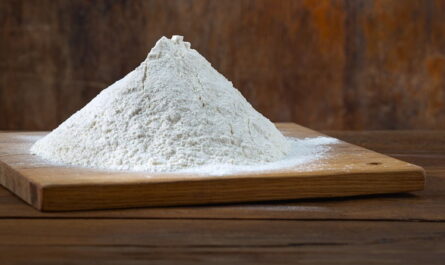Additive manufacturing (AM), commonly known as 3D printing, refers to the process of joining materials to construct 3D objects. AM techniques build parts by laying down thin layers of material one by one until the entire part is constructed. Today, additive manufacturing is used to produce functional prototypes, tools, end-use parts as well as components in industries like automotive, healthcare, aerospace and consumer products. Polymers, also known as plastics, are increasingly being used as materials in additive manufacturing due to their versatile properties and ease of processing.
Thermoplastic Polymers
Thermoplastic polymers are the most commonly used materials for fused filament fabrication (FFF), the most prevalent AM technique. In FFF, a plastic filament is fed into a heated extruder head which melts and deposits it in thin layers on the build platform. Some of the commonly used thermoplastic materials for FFF include:
– Acrylonitrile Butadiene Styrene (ABS): ABS is a durable and impact resistant material. Parts printed with ABS tend to be rigid and strong. Printing temperature for ABS ranges between 210-250 degrees Celsius.
– Polyethylene Terephthalate Glycol-modified (PETG): PETG provides tough and flexible parts with high impact resistance. It has good layer adhesion, chemical resistance and printability. The recommended printing temperature for PETG is 240-260 degrees Celsius.
– Polylactic Acid (PLA): PLA is a biodegradable and sustainable thermoplastic derived from renewable plant sources like corn starch or sugarcane. It prints well with acceptable mechanical properties. PLA parts are printed between 185-230 degrees Celsius.
Thermoplastic Polyurethane (TPU): TPU Polymers for Additive Manufacturing offers rubber-like flexibility combined with reasonable impact strength. TPU filaments are suitable for applications requiring elasticity, resilience and abrasion resistance. Optimal printing temperature range for TPU is 220-235 degrees Celsius.
Thermoset Polymers
Unlike thermoplastics, thermoset polymers undergo cross-linking and hardening during manufacturing and cannot be remelted or reshaped after processing. Some widely used thermoset resins in additive manufacturing are:
– Polymers for Additive Manufacturing as Photopolymers are liquid resins cured by light, most commonly ultraviolet (UV) light. Stereolithography (SLA) uses liquid photopolymer resins which solidify layer by layer upon exposure to UV light from a laser or LCD screen. Common photopolymers are acrylic, epoxy and polyurethane resins with very high resolution and strength.
– Polyjet Photopolymers: Digital Light Processing (DLP) 3D printers use polyjet photopolymer materials which cure instantly on exposure to UV light. Offers multi-material prints with properties ranging from flexible to rigid. Has widespread medical and dental applications.
– Polyamide (Nylon): Laser sintering uses nylon or polyamide powder which is fused together by a high-power laser beam. Produces mechanically strong parts with high heat resistance suitable for load-bearing applications. Common polyamide materials are PA 11 and PA 12.
– Polyether Ether Ketone (PEEK): PEEK is a high-performance engineering thermoplastic ideal for medical and space-critical applications due to its biocompatibility, sterilization resistance, strength and rigidity. PEEK is processed using selective laser sintering.
Advantages of Polymers
Some key advantages of using polymers as materials for additive manufacturing include:
– Design Freedom: Polymers allow fabrication of complex geometries with intricate details, moving parts and multi-material capabilities not possible with other techniques.
– Material Diversity: Wide range of polymers available with properties covering rigid, flexible, high strength, heat and impact resistant etc. enabling applications in diverse fields.
– Low Cost: Thermoplastic polymers have relatively low material and printing costs compared to metals. Production can be home and desktop scale.
– Post-processing Flexibility: Polymer parts do not require chemical treatment like metals. Finishing operations include support removal, sanding, painting etc.
– Mass Customization: AM paired with polymers supports on-demand manufacturing and customized part production in low volumes.
– Superior Mechanical Properties: Engineering polymers used in SLS and SLA methods provide strength and stability matching injection molded plastics.
Some major areas of polymer AM applications are:
– Automotive: Interior fittings, functional prototypes, jigs and fixtures for assembly lines.
– Healthcare: Custom implants, prosthetics, surgical guides, dental crowns with bio-compatible materials.
– Aerospace: Low volume prototypes, customized lightweight parts, pilot seat components.
– Consumer Products: Wearables, fashion, sporting goods, electronics enclosures and housings.
– Industrial Goods: Specialty machine components, custom tools and molds, refurbishment parts.
– Construction: Architectural models, formwork and reinforcement for 3D printed concrete structures.
As polymer materials and 3D printing technologies continue advancing, additive manufacturing is expected grow into a mainstream production method for parts manufacturing. The design freedom, mass customization and supply chain benefits offered by polymer 3D printing will drive its adoption across industries worldwide.
*Note:
1. Source: Coherent Market Insights, Public sources, Desk research
2. We have leveraged AI tools to mine information and compile it
About Author - Ravina Pandya
Ravina Pandya,a content writer, has a strong foothold in the market research industry. She specializes in writing well-researched articles from different industries, including food and beverages, information and technology, healthcare, chemicals and materials, etc. With an MBA in E-commerce, she has expertise in SEO-optimized content that resonates with industry professionals. LinkedIn Profile



